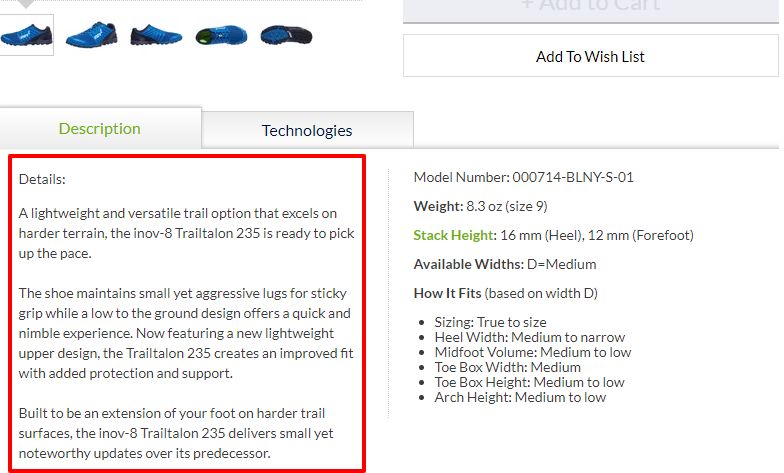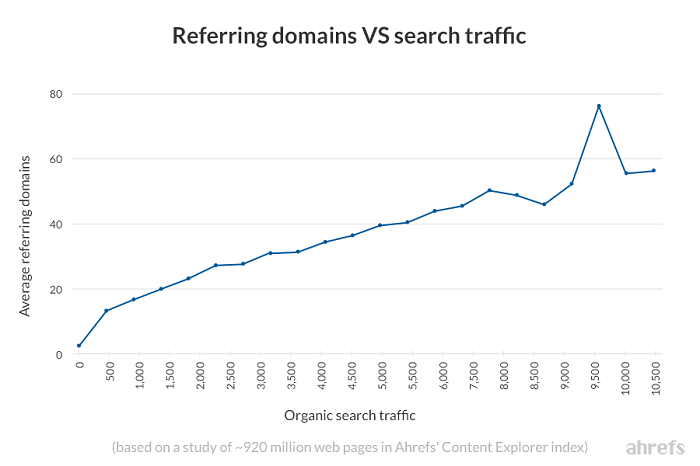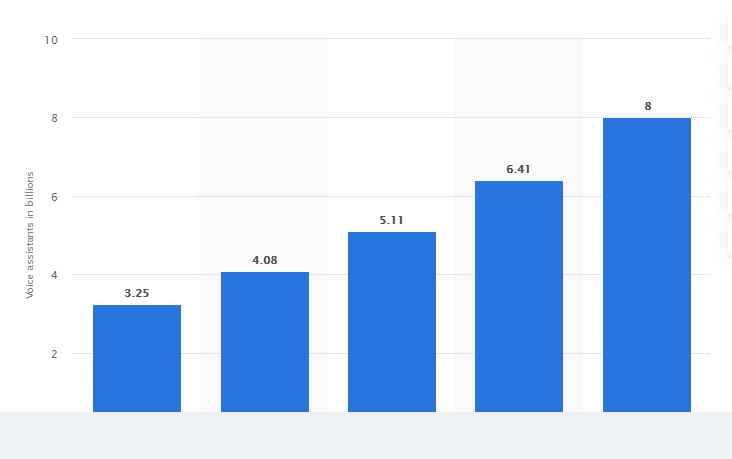7 Simple eCommerce SEO Tips To Help You Rank And Sell More

Getting eCommerce SEO right is a top priority for stores and businesses that want to rake in the sales.
But, the competition to rank on the first page of the SERPs is fiercer than ever. Just to put this in perspective, studies show that websites that appear on the first page of Google’s SERPs get about 75% of all traffic.
What does this all mean?
Simply put, it means web pages that rank on the first page of Google (or other search engines) get almost all the business. Yes, you can always boost your sales through Facebook ads, but for long term growth, nothing beats search engine optimization. And that’s where these eCommerce SEO tips come in to push you higher up the rankings.
Let’s dive in.
Ecommerce SEO – Lay the Right Foundation
If ever there’s crucial a question asked by many an online business owner, it’s:
How do I choose the right eCommerce platform?
Here are 3 foundational qualities you need to look for in a top e-commerce platform. The right platform positions you for rankings and sales.
- Uber-reliable. When it comes to running an eCommerce business, one factor that influences success is the reliability of your eCommerce platform. So you need to ensure that you build your store on a robust and reliable CMS.
- Mobile friendly. Mobile has overtaken desktop in terms of usage. Because of this, Google favors sites that are mobile-friendly in their search results. In other words, if your eCommerce store is not mobile-friendly, you miss out on a good ranking opportunity. You also lose out on sales.
- Easy to set up. Another important quality you need to look for in a good eCommerce platform is the ease of use. This not only makes it easy for you to manage your store, but it also helps you save on money you’d otherwise spend on a developer. On the flip side, your store should also be easy to navigate for users. A poor UX will affect your rankings and sales.
You may also want to read: Move Over Traditional eCommerce! It’s Time to Go Headless
So how do you improve the chances of your eCommerce store making it to the top of the SERPs? Well, that’s what we’ll be looking at today.
Ecommerce SEO Tips – 7 Things to Help You Get to Page One
Ranking well on Google was easy a few years ago.
All you had to do was stuff some keywords into your content or buy a few dodgy links (which was and still is bad). However, Google’s algorithm is more advanced today and can easily spot websites that are trying to game the system.
So how do you win favor in Google’s eyes?
It’s pretty simple really although you need to invest a bit of time, money, and other resources to pull it off. As you embark on your SEO campaign, realize that Google values one thing:
Providing their users with exceptional value.
Let’s look at how you can achieve that.
1. Create an SEO Strategy
As said earlier, the competition to get to the top of the SERPs is fierce. With everyone racing to the top, you must play your cards well. You must develop a robust SEO strategy that will help you achieve the results you want.
eCommerce SEO starts with a plan that involves:
- Audience research. Research your audience to find out who they are, what they do, and what challenges they are facing. This will help you position your brand and content strategically.
- User intent. When visitors come to your website, what exactly are they looking for? The answer to this question is key in creating content (and user experience) your users will find satisfactory. The result is lower bounce rates and longer dwell times. Both factors determine how you rank.
- Keyword research. Keyword research is nothing new. However, it still plays a big role in any SEO strategy. Your keyword research should be directed by your audience research and user intent. As for the keywords themselves, focus on long-tail keywords. These are keywords with 3 or more words. They usually have less competition and meet user intent helping you rank higher faster.
Document your SEO strategy as this will help you track what works and what doesn’t. Tweak it as needed to improve on it.
2. Craft SEO Optimized Product Descriptions
Contrary to popular belief, product descriptions aren’t just descriptions of your product. Your product descriptions are powerful tools that act as:
- A mini sales page. A product description serves as marketing copy that describes a product in a way that influences readers to buy. To do that, a good product description explains the features and benefits of the product in a way that resonates with the reader.
- An opportunity to implement on-page SEO. Your product description is an opportunity for you to woo the Google bots to your eCommerce store. You do this by implementing on-page SEO practices in your product descriptions. These include keyword use (in the copy and image alt tags) and using heading tags.
Don’t take your product descriptions lightly. They provide you a great opportunity to improve your store’s ranking on the SERPs.
3. Backlinks – Never Going Out of Fashion
One SEO tip that has been around for some time is link building. And that’s because it is one of the major ranking factors Google considers when ranking websites. That’s why building backlinks should be one of your cornerstone eCommerce SEO strategies. Backlinks are important for 3 main reasons:
- Drive traffic. When you get a backlink from another website, you tap into their traffic.
- Improve your DA. Domain authority (DA) refers to your website’s reputation on the internet. The higher the DA, the more reputable your website. As a result, Google will rank your website better.
- Increase your page ranking. While DA refers to the overall reputation of your website, page ranking has to do with the relevance and authority of a page.
You may also want to read: Why Backlinks May Hurt Your SEO & How to Boost Inbound Links
So how do you build backlinks?
One important aspect you need to consider before you even start your link building campaign is that you must build quality backlinks. These are backlinks from reputable websites. You also have to ensure that the links you’re building are from websites that are relevant. Irrelevant backlinks are, for example, backlinks from a vape store when your website majors in kids’ toys.
With backlinks, quality trumps quantity any day. And here’s how to build those quality backlinks:
- Create link-worthy content. Content is the currency of the internet. Create value-packed pages on your e-commerce website, including on static pages like homepages. People will readily link back to exceptional content that provides value. You may need to learn how to be a great copywriter or you can outsource your content creation – of which the latter is usually the better if time is a resource you can’t spare.
- Publish guest posts. Guest posting means creating content you’ll publish on someone else’s website. Not only do you get a backlink, but you also get exposed to an audience you otherwise could not reach.
- Leverage social media. SEO “gurus” dismiss social media backlinks as pointless because they are “no-follow” links. However, social signals play an important role in ranking. Besides, social media is a great way to drive traffic to your website. Traffic also affects how well your page ranks. So go ahead and build a big following on Twitter and other social channels.
- List your business in directories. Listing your business in a business directory is one of the least known and yet highly effective ways of creating backlinks. Not only will you get quality backlinks, but it will also help you drive relevant traffic to your site. Business directories are untapped backlink mines you should immediately start exploiting.
Besides building “tangible” backlinks you can also build “linkless backlinks”. Linkless backlinks are unlinked mentions of your brand online. Anytime people mention your brand online, Google notices. So, create (or do) something worth talking about.
4. E.A.T Your Way to the Top
Yes, you read that right.
You can E.A.T your way to the top of the SERPs. Actually, this is one method of ranking Google recommends highly.
And no, E.A.T has nothing to do with food. 🍕🍗🍔
It has everything to do with creating content that meets certain criteria Google uses to rank pages, though. And according to Google’s ranking guidelines, E.A.T stands for:
- Expertise. To create expert content, you not only need to have in-depth knowledge about a topic but you also need to create it in a way that is engaging and easy to digest. Know what your audience is looking for (user intent), how they are searching for it (keyword research), and then create a piece of content that comprehensively covers the topic. A great way to do this is to create detailed product buying guides.
- Authority. Anyone can be an expert. Being an authority is a whole different ball game. To be considered an authority, other experts need to cite your work. And this is where link building (real links and mentions) plays an important role. As a side note, Google also considers the DA of the website the page has been published on when ranking the said page.
- Trustworthiness. Yes, Google has trust issues. They want to ensure users can trust them to dish up relevant and practical information. And so trust plays a big role when ranking web pages. Some factors that can help prove your website is trustworthy include improving security, having a physical address, and encouraging readers to leave reviews or comments.
Meeting the E.A.T standards Google uses to evaluate web pages will drastically improve your chances of ranking high on SERPs. This is one WordPress SEO tip you definitely need to implement.
5. Optimize for Voice Search
The use of voice-activated devices has been steadily rising over the past few years. In fact, research shows that over one-third of Americans will be using voice assistants by the year 2021. To put that in perspective, check out the graph below that shows the number of digital voice assistants in use worldwide (from 2019 to 2023):
With more and more people opting to use voice queries instead of typing in their queries, it’s important that you optimize your content for voice search. How do you do that?
- Create conversational content. While typed queries are more about keywords, spoken queries are more conversational. With Google using NLP to serve users with relevant and contextual content, using natural language is important to rank well – especially for voice.
- Include an FAQ page on your website. FAQ pages are a great way to address any objections customers may have concerning your product. However, they are also crucial to your voice search strategy. That’s because most voice searches are question-based. FAQ pages serve the purpose of answering questions your audience asks. Because of this, by default, they satisfy user intent.
You can’t ignore voice search in your SEO strategy because voice search is here to stay.
6. Optimize Your Videos
Video has fast become the preferred content type.
Given a choice, most people will sooner click on a video in the search results than written content. Therefore, it’s important to include video in your eCommerce content strategy. Not only should you use video, but also optimize your video content for SEO. Here’s how you can do that:
- Scripts are your best friend. As much as you may love shooting your videos spontaneously, scripts are the way to go if you’re to rank. The main reason for this is that they help you create clear cut sections of your video. This helps Google know what your video is about. It also helps the search engine know which clips to use.
- Optimize your metadata. Metadata like your title, tags, and descriptions must be optimized to make it easier for search engines to find your content and know what it’s all about.
- Publish your transcripts. Publishing your transcripts (professionally done, not by YouTube) is also another great way to let search engines know what your video is about. This will also help your video come up for keywords associated with it.
According to a study, YouTube is twice as popular as Bing, making it one of the top search engines. Ignoring video search in your eCommerce SEO strategy is, therefore, sabotaging your own success.
7. Keep Site Navigation Simple
One of the biggest challenges eCommerce stores have is keeping their pages and navigation simple. This is especially true of those that have large product catalogs.
Site architecture plays a big role in the way search engines crawl websites. As a result, it also affects your ranking. So how can you ensure your site structure is clean and easy to crawl – for both search engines and users?
- Use internal links. Internal links improve your SEO by showing that pages are related. It also improves UX by making it easy for users to reach a page you’re referencing.
- Keep every page within reach. As a rule of thumb, every page should be 3 clicks away from the homepage. Over 3 clicks and people will drop off. Concerning SEO, it may lead to a wasted crawl budget.
Simplifying your site architecture is crucial to boosting your eCommerce SEO. Make sure each page you add fits into your site structure well without complicating it.
Ecommerce SEO – Despite the Competition, Ranking High is Still Possible
Daunting as it may be, appearing on the first page of Google is doable. But you must:
- Be strategic
- Put in some work
- Follow eCommerce SEO best practices
Remember, ranking on Google’s front page (especially the first 3 spots) ensures you get the lion’s share of the traffic. And yes, online, more traffic means more revenue.
Featured image: Copyright: ‘https://www.123rf.com/profile_everythingpossible‘ / 123RF Stock Photo
Qhubekani Nyathi
Latest posts by Qhubekani Nyathi (see all)
- How To Increase Landing Page Conversions (13 Pro Tips) - May 6, 2020
- 7 Simple eCommerce SEO Tips To Help You Rank And Sell More - March 5, 2020
- 9 Easy Email Hacks To Increase Open Rates - February 27, 2019





